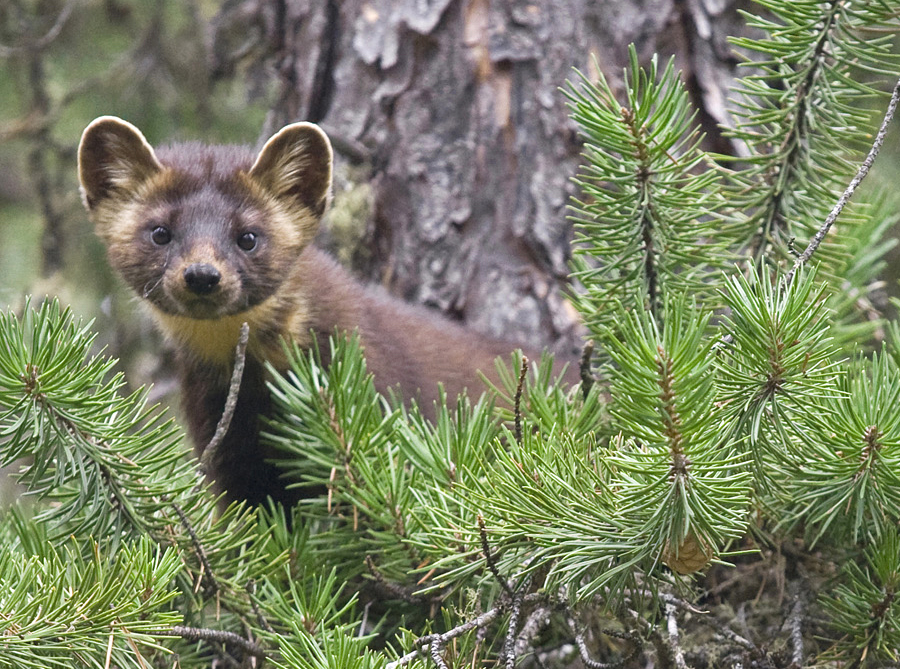
Biodiversity is the variety of life on Earth. All living things, ourselves included, rely on biodiversity to survive.
The benefits we get from biodiversity are called ecosystem services and they keep us healthy, help make our homes and families safe from natural disasters like floods, strengthen and feed our communities, and power our economy.
This natural infrastructure also supports our forest, farming, fishing and recreation and tourism industries.
A lot is known about many Ontario species, especially mammals, birds, reptiles, amphibians, fishes and vascular plants (those with roots, stems and leaves). Yet we have much to learn about the majority of species found here, such as beetles, moths and other insects, spiders and fungi. And new species are still waiting to be discovered. Ecologists and naturalists regularly find native species that have not been previously documented in Ontario. Recent fieldwork has uncovered several insect and lichen species that are new to the province and one undescribed species of lichen that is new to science.
Genetic diversity is the foundation that underpins biodiversity. Individual genes (segments of DNA molecules) provide the code that enables organisms to survive, grow and reproduce. Genes are also the basis for the traits that are passed on from parents to their offspring. Diversity at the genetic level allows species to adapt to environmental stressors, such as habitat change, new diseases and climate change, and to persist through time. Populations of most species are genetically adapted to local conditions and climate.
Research in Ontario has shown the importance of using locally adapted genetic strains in the management of species such as Eastern White Pine and Lake Trout and of maintaining genetically diverse populations of common and widespread species. When a species’ genetic diversity declines through a decrease in population, isolation from other populations and inbreeding, the resulting reduction in survival and reproduction rates can lead to a loss of populations. In some cases, unique genetic resources may be lost forever. Connectivity of landscapes is critical for species movement and gene flow, helping them to be more adaptable and resilient to disturbance.
Monitoring the genetic diversity of Ontario’s species is a huge task but is essential for effective biodiversity conservation. Through collaborative research and monitoring by government agencies, scientists, non-government organizations, businesses and members of the public, our knowledge of Ontario’s genetic diversity will continue to improve.
It is estimated that Ontario has approximately 30,000 species and is ranked among the provinces with the highest diversity of known species in Canada (CESCC, 2022). The majority of species are insects, followed by thousands of different species of plants and hundreds of vertebrate species — mammals, birds, reptiles, amphibians and fishes.
Ecosystem diversity is the third level of biodiversity. An ecosystem can be very small, such as a pond, or very large, like the Hudson Bay Lowlands, which comprise about one-quarter of Ontario. An ecosystem is characterized by what grows, lives and dies within that space and by the interactions of air, water, soil, rock and living organisms. These interactions create important ecosystem processes, such as primary production, decomposition and cycling of nutrients and energy.
Ontario’s rich diversity of ecosystems includes a significant portion of the global boreal forest, an expansive forested ecosystem that crosses Canada. Other smaller ecosystems are also important. For example, the tallgrass prairie and savannah habitats in southern and northwestern Ontario support unique communities of plants and animals. Impressive coastal dune ecosystems are found on the shores of the Great Lakes, and alvars (flat open limestone ecosystems on the landscape) provide the essential habitat for maintaining the genetic diversity and long-term future of Ontario’s species, as well as the continued benefits to humans from ecosystem services.
Sustainable management of Ontario’s diverse ecosystems also helps to provide enduring benefits from biodiversity.
Follow Us
